8 ways to build staff engagement in your news organization
P. Kim Bui, API’s Better News,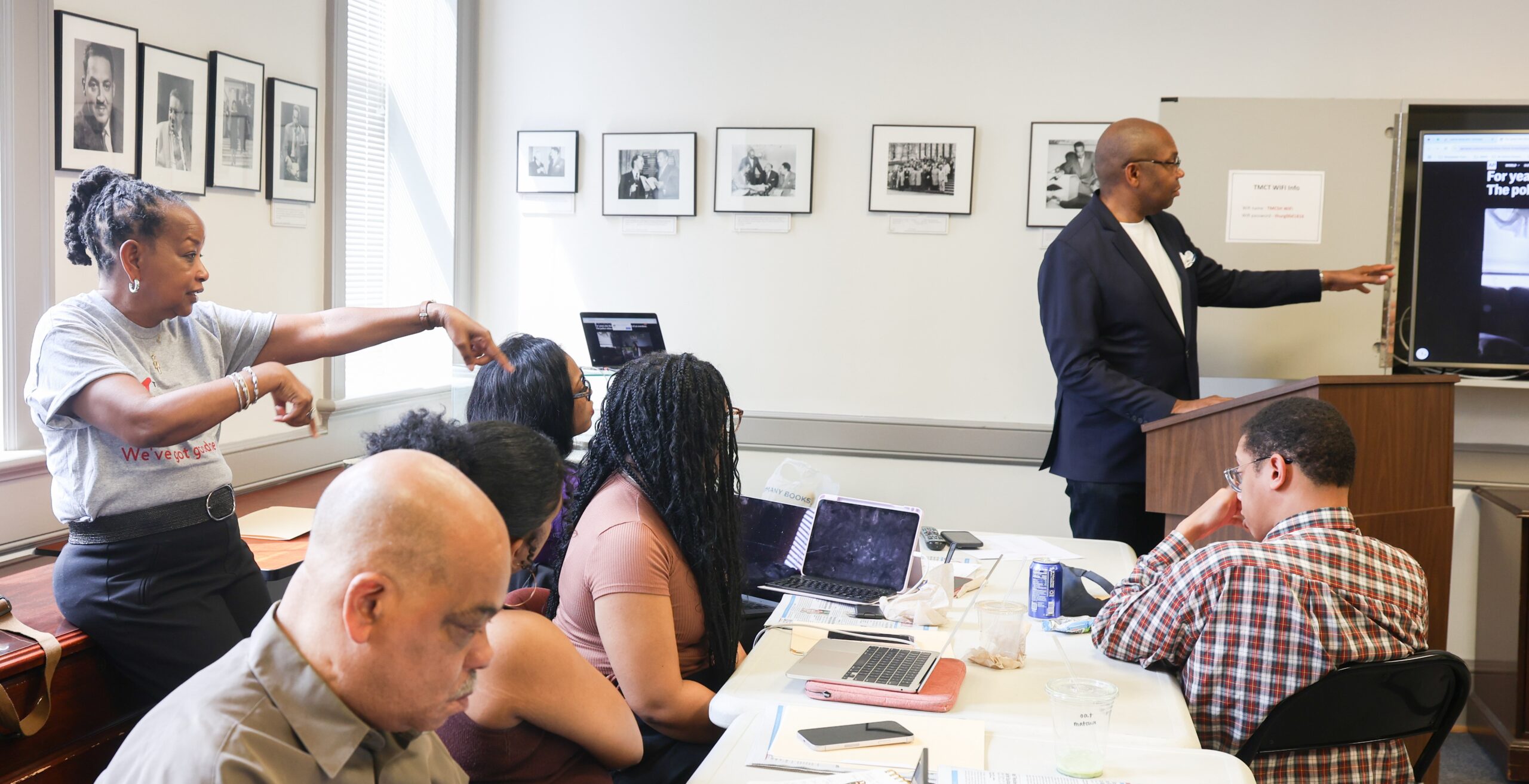
Ron Dixon, director of the Associated Press Local Investigative Reporting Program, helps facilitate The Washington Informer’s staff retreat, organized by publisher Denise Rolark-Barnes (standing left), in April 2025. (Shevry Lassiter/The Washington Informer)
Here are 8 ideas to steal and adapt to encourage connection and collaboration in newsrooms.This is a series on Better News to a) showcase innovative/experimental ideas that emerge from the Knight-Lenfest Newsroom Initiative and b) share replicable tactics that benefit the news industry as a whole.
These “wins” come from Charlottesville Tomorrow, Fort Worth Report, KERA, Knox News, Milwaukee Journal Sentinel, Sacramento Bee, The Seattle Times and The Washington Informer. All eight organizations participated in the American Press Institute’s Connection + Collaboration Learning Cohort for Table Stakes alumni in 2025.
Building a connected and collaborative culture in your news organization strengthens bonds between your staff and also with your community.
Eight news organizations were each each granted $5,000 by the American Press Institute to pursue experiments in strengthening workplace culture as part of the 2025 Connection + Collaboration Learning Cohort.
The experiments included staff surveys and employee engagement events. Some were low-cost and some, like newsroom-wide training, were funded by the grant. The Milwaukee Journal Sentinel held a low-cost but much appreciated trivia night, and hired a trainer to work with their editors.
“This takes time. And it costs money,” said Jill Williams of the Milwaukee Journal Sentinel. “It’s a continuous effort. You can’t stop.”
Through their experiments, the teams formed a list of non-negotiables — ideas and attitudes that are required to build a healthy newsroom culture. Read on to learn more about their experiments and lessons for other news organizations.
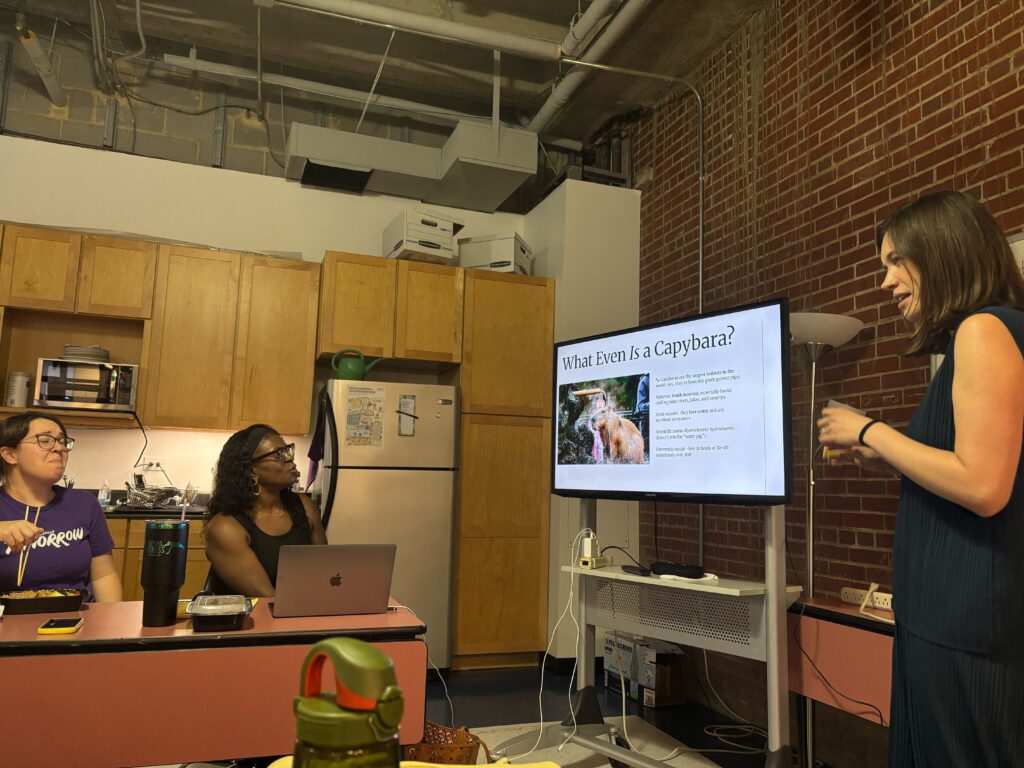
Ana Carrier shares her “What even is a capybara?” presentation with Charlottesville Tomorrow staff, partners and contractors. A presentation party is one of the options selected by staff for a teambuilding series organized from February through April 2025. (Angilee Shah/Charlottesville Tomorrow)
Charlottesville Tomorrow
What they did: Staff input drove how Charlottesville Tomorrow fostered belonging in its growing organization. After receiving staff input, People and Culture Officer Aliyah Cotton narrowed the list to a mix of fun events (a presentation party) to more practical sessions (podcast production). The result was about 75% attendance.
The nonnegotiable: Give everyone an opportunity to get on the bus and provide pre-planning brainstorming and after-the-fact feedback.
The staff determined what they wanted to hear about in this round of training, giving them a say in how they want to build culture.
“They guided us,” Chief Sustainability Officer Michaux Hood said.
The series of events helped the Charlottesville Tomorrow staff and also gave team members a chance to take a leadership role. They took the lead on booking the events, choosing topics, bringing in outside speakers and resources, selecting local restaurants and organizing lunch orders, and handling invoicing and follow up with speakers.
Advice for other news leaders: Events can work for your existing staff, but also build connection as new staff are coming on board.
“As new folks came in, it was great to be able to say that they could join in these learning experiences that gave them practical learning and also time to meet and bond” with everyone else in the newsroom, the team wrote in reflection.
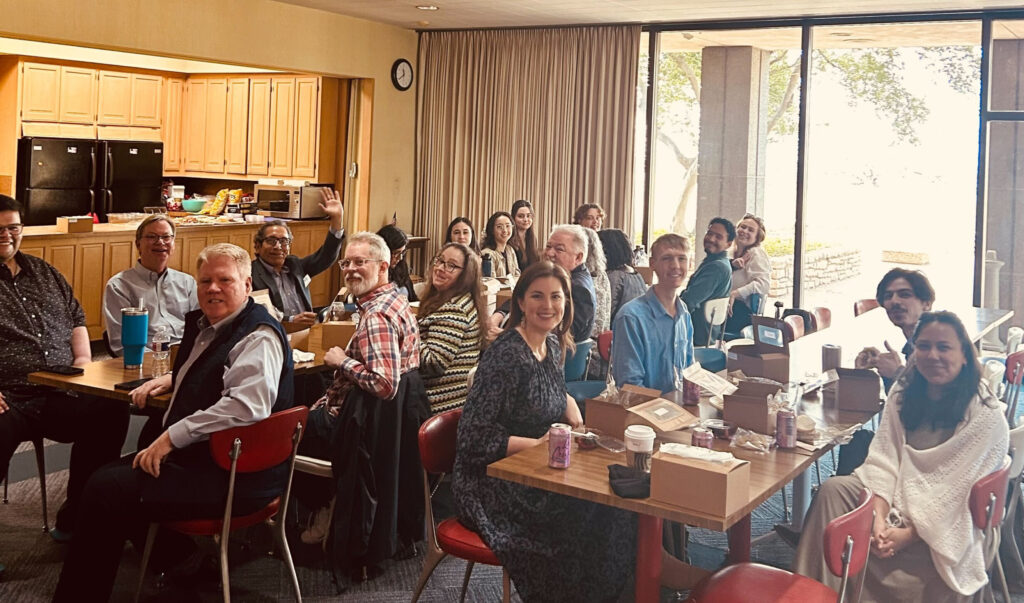
Journalists at the Fort Worth Report gather at a “lede lunch.” The monthly meals encourage staff to collaborate and find better ways to serve readers in the community. (Courtesy of Fort Worth Report)
Fort Worth Report
What they did: The Fort Worth Report leadership wanted staff to learn more about one another — in a work capacity and personally.
To do so, they mixed structured team-building with unstructured gatherings.
For their structured team-building, the entire newsroom dedicated took Gallup’s StrengthsQuest assessment. Doing the exercise together created a space to talk about everyone’s strengths in a different way, and they have even taken to physically displaying those strengths in the newsroom, at their desks.
They also created monthly lunches with no other purpose than to gather to talk about opportunities, story ideas and anything else that came up. Once the newsroom got the hang of the unstructured lunches, they were successful.
It was “an opportunity for conversations across beats that really don’t often happen in our newsroom, where teams tend to be siloed,” General Manager Mike Distelhorst said.
The nonnegotiable: Build non-transactional relationships
“We create space for genuine connection beyond deadlines — through check-ins, monthly birthday lunches, our annual retreat, one-on-ones, or informal gatherings. Connection and consideration is part of our culture,” the team wrote when reflecting on their experiment.
Intent means acknowledging there are many different ways to get people together and honoring those ways as much as possible.
Advice for other newsrooms: When creating connection opportunities, mix people from different areas of the newsroom.
Inviting reporters from different beats to work with one another was effective because it offered an opportunity to share “insights not often available in a busy deadline-driven environment.”
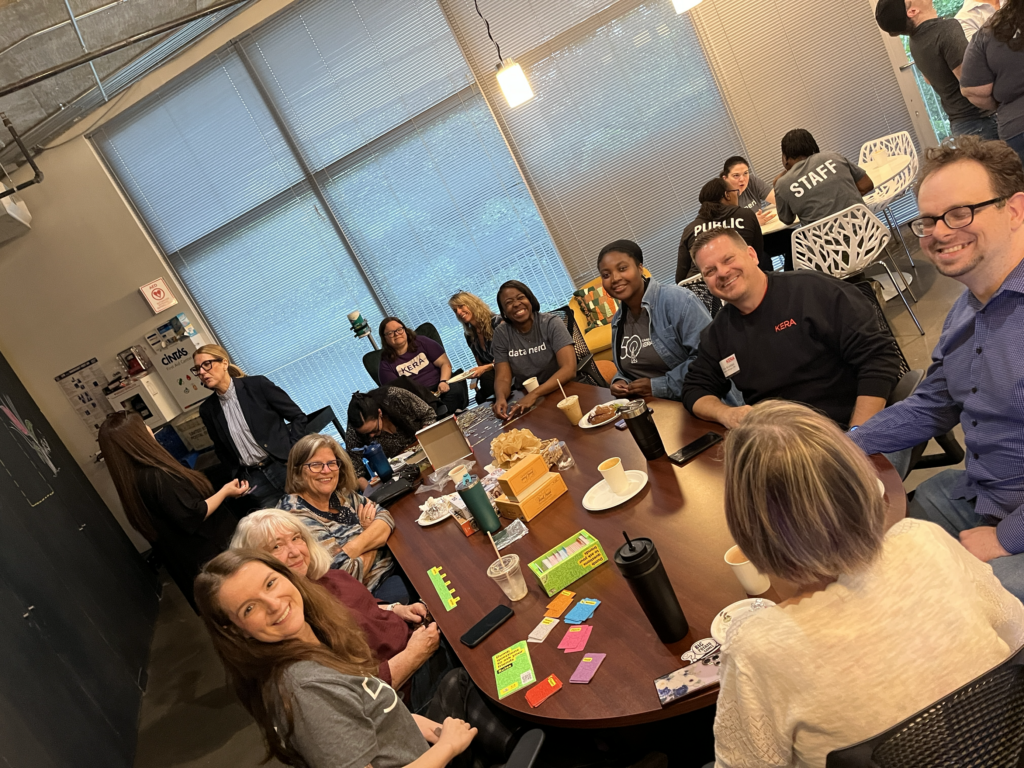
Staff connect over games and coffee during a social hour on the last day of KERA Connect Week in April 2025. (Valerie Morales/KERA)
KERA
What they did: In early 2025, KERA vacated its main headquarters in Dallas, distributing the staff across three different locations.
KERA Connect Week was created to encourage cross-departmental connection and a sense of belonging in all three locations. The week included a listening session at each location to hear what staff thought about creating a new Belonging Group/Council and social events such as a food truck outing. Staff from all locations were encouraged to head to a different location to meet colleagues.
“This was a good building block to continue building on,” said Valerie Morales, people and culture administrative assistant.
The nonnegotiable: Building connection should take into account distributed teams
With staff spread out across locations, finding ways to bring people together mattered. Even more important: making sure managers are encouraging and getting buy-in across the newsroom.
“Everyone has a personal responsibility for creating positive culture and a sense of belonging at work,” the team wrote in reflection.
Advice to others: Work to create capacity on all teams during events/weeks like these “to further help encourage participation,” the team wrote.
Find ways to communicate the importance of connection to editors and offer to find ways to stop or pause something to lower the bar for participation.
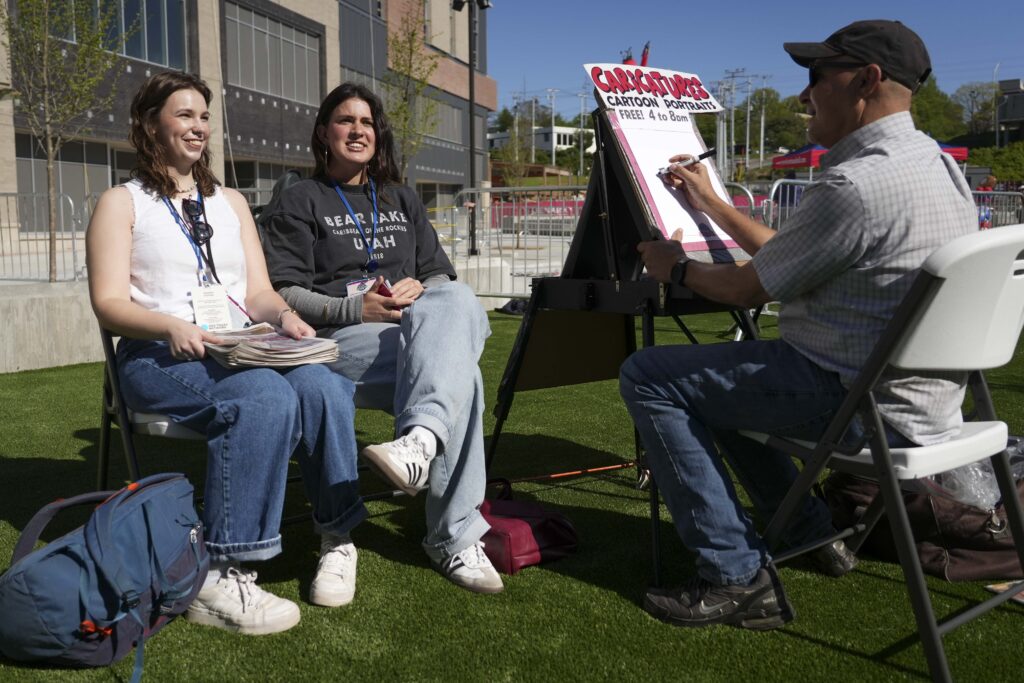
Knox News reporters Hayden Dunbar (left) and Joanna Hayes sit with a caricature artist at the new downtown baseball stadium ahead of the first Knoxville Smokies game in April 2025. (Courtesy of Knox News)
Knox News
The Knox News team had one goal behind the many new engagement initiatives: to help every reporter feel capable of reporting any story.
Small groups were taken out to lunch to learn a little more about newsroom culture, and larger groups went out on field trips to get to know other parts of the company, like the printing press team, and also the community. At the first home game in a new baseball stadium, staffers handed out baseball cards with local landmarks as a conversation starter with the community.
It was about “having not that 30,000-foot view as journalists, but really being part of the community ourselves,” said Hayden Dunbar, storyteller reporter.
Inside the newsroom, all-staff meetings were adapted to include things like discussion of an article picked by staff, to have conversations about writing. Existing staff members also created Beat 101 guides to share what they’ve learned about covering their beats. New staff members were also considered: The onboarding process was tweaked to add a first-day schedule with a BINGO card of milestones for the first few weeks.
The nonnegotiable: Get comfortable getting uncomfortable.
Changing culture sometimes means you’ll have difficult conversations, but approach them with “respect and the goal of improving culture for everyone,” the team wrote in reflection.
Advice to others: “It’s OK to be wrong,” the team wrote. “Being wrong or not knowing an answer can make a person feel inadequate. If we can accept those feelings, decenter them and move forward, we can all be more receptive to growth and improvement.”
When the team saw more skepticism than they had anticipated, they realized they should have taken that as a sign to pause and listen, not defend.
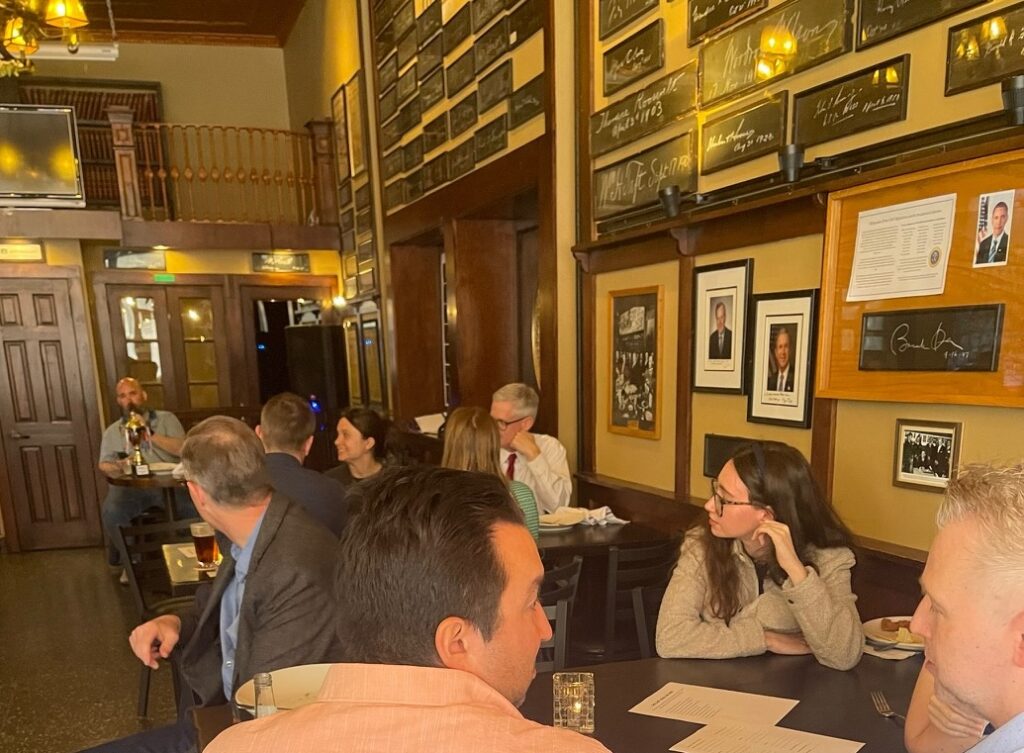
Randomly grouped teams of Milwaukee Journal Sentinel reporters and editors compete at staff trivia in April 2025 at the Newsroom Pub in downtown Milwaukee. (Jill Williams/Milwaukee Journal Sentinel)
Milwaukee Journal Sentinel
What they did: The Milwaukee Journal Sentinel’s approach was a mix of training, teamwork and connection.
- An off-site: An external trainer was hired to address something that had come up in internal newsroom surveys: reporters weren’t getting the feedback they wanted from editors. The training focused on how to provide feedback to staff with coaching in mind, and how to build that coaching relationship.
- A trivia night: Teams were randomly formed to participate in a trivia night. The prize? A “bragging rights” trophy, and learning what trivia their colleagues knew that wouldn’t have otherwise come up in their day-to-day work.
- Coffee: Starbucks gift cards were distributed to help facilitate coffees between staff members. Afterward, the pairs were asked to take a selfie that is displayed in the newsroom.
“I think that we are building relationships, which is the purpose of all of these exercises and how important they are for people to understand who they are and who we work with every day,” said Jill Williams, deputy editor for features, sports and new initiatives.
The nonnegotiable: Initiatives have life cycles. Always follow up with outcomes and action items.
“As you develop new initiatives to address newsroom needs, make sure to offer thorough and timely information before ’the new thing’ is officially introduced, then follow up later to share takeaways/results and invite feedback,” the team wrote in reflection.
It’s important to reinforce your goals at all stages of a connection project.
Advice to others: Mid-level editors and reporters often need help communicating with each other, especially when it comes to feedback. Think about boosting your editors’ capabilities to go beyond editing stories and include coaching reporters who are often hungry for that kind of connection.
“Training is necessary to help editors move from ‘fixing’ an issue repeatedly to ‘coaching’ the reporter on the underlying need/issue,” the team wrote.
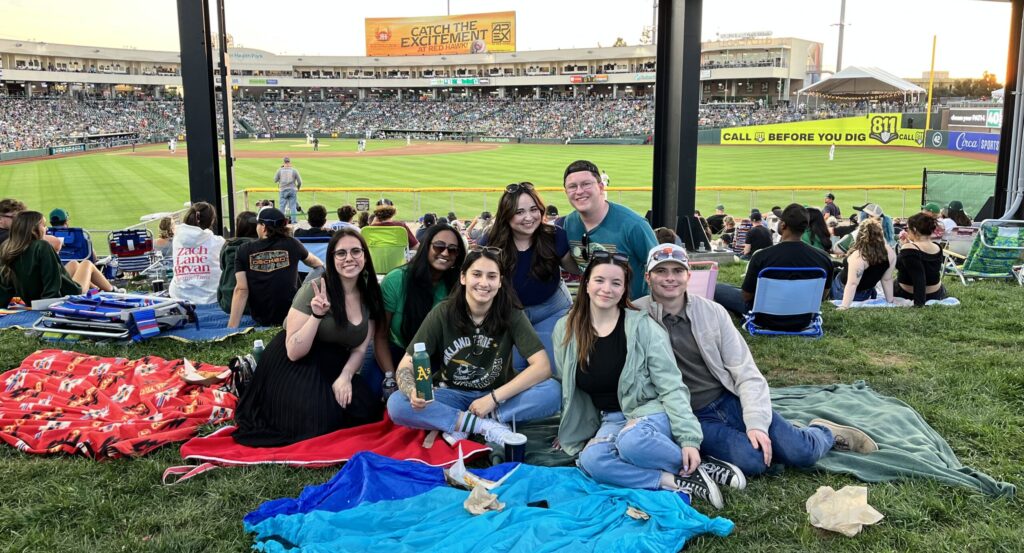
Sacramento Bee journalists watched the Athletics’ play on May 5, 2025 at Sutter Health Park. (Courtesy of The Sacramento Bee)
The Sacramento Bee
What they did: Working with a consultant, The Sacramento Bee conducted a staff survey about newsroom culture. The goal was to establish a baseline of where newsroom culture was and where staff wanted it to go. About 70% of staff responded.
After the survey, the consultant worked with managers to create actionable insights.
A staff engagement event held after the survey was informed by what they learned. A staff lunch kicked off a summer of potlucks, and tickets to a baseball game were raffled off.
“Some of the feedback that we got from the survey was that our journalists really enjoy spending time with each other, and that they want to spend more time with colleagues, both collaborating, but also just having fun,” Executive Editor Colleen McCain Nelson said.
The nonnegotiable: Build a willingness to engage.
It helps any initiative to bring people along from the onset. By asking for help, your project can get better and more thoughtful as a result of those discussions.
Advice to others: Outside help can add a layer of transparency and trust, leading to more honest outcomes.
“Working with an outside consultant helped to ease apprehension over questions of anonymity and expertise in culture-building,” the team wrote in reflection.
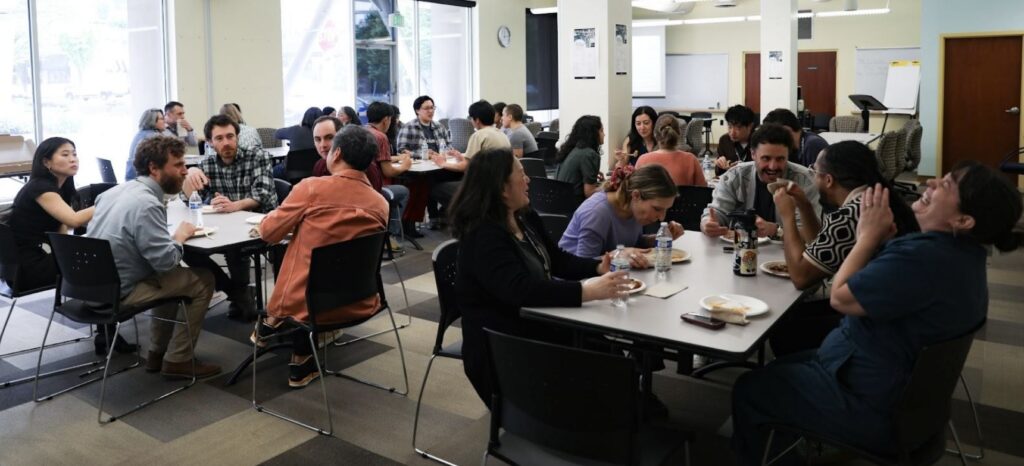
Staff enjoy a taco lunch at a Seattle Times newsroom celebration in April 2025. (Naomi Ishisaka/The Seattle Times)
The Seattle Times
What they did: To foster more connection internally and with the community, The Seattle Times engaged a consultant to hold a follow-up training addressing LGBTQ+ issues and gender inclusion. Two sessions were held via Zoom, and 68 staffers attended, about a third of the newsroom. The feedback was good, with participants telling leaders it deepened their understanding of these issues, particularly the transgender community storylines that have developed this year.
“It’s already been put into practice,” said Naomi Ishstaka, assistant managing editor for diversity and inclusion.
A taco lunch celebrated those who completed the training and the team’s work during the first quarter of 2025.
The nonnegotiable: People start from different places, and that’s OK. The point is to grow and evolve from wherever you are.
Some people need structure. Some work better making informal connections. Recognize people need different things and have a mix of options to suit different styles and needs.
Advice for others: “Suggestions do not always work well. Sometimes, there is a time and space for direct orders,” the team wrote in reflection.
Sometimes, the people who need training the most are the least likely to attend. That means that occasionally, it’s a good idea to make important training mandatory to staff and managers alike.
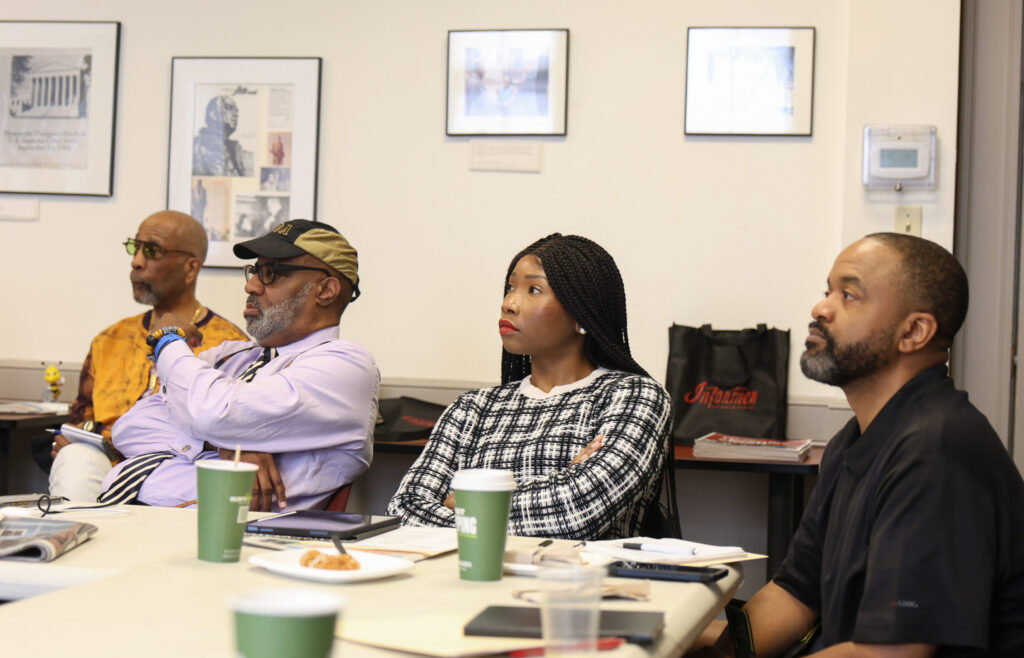
Staff of The Washington Informer listen to presentations during a team retreat in April 2025 at the Thurgood Marshall Center in Northwest Washington, D.C. (Shevry Lassiter/Washington Informer)
The Washington Informer
What they did: To listen to their staff, The Washington Informer leadership team set up a “listening” tour for their 23 full- and part-time staff, including a staff retreat.
Staff members were invited to schedule a one-on-one meeting with the publisher to hear more about them as individuals, and to learn about their personal goals. Staff received small thank-you gifts, and many of the contractors and freelancers participated.
The team works remotely, so gathering together in person at a staff retreat led to discussion about how to become more collaborative. Teams of three people from different departments were assigned to go out into the surrounding community and come back with story ideas. The activity brought together team members who had never worked together.
“We need to be stronger so that we can connect more with people outside of our lives and our circles,” Publisher Denise Rolark Barnes said.
The nonnegotiable: Communicate expectations and solicit feedback often.
When you set a goal, share that goal, and give support to people working toward it. Give each goal clear metrics and outcomes, but remember to share feedback on what worked, what didn’t and why.
“We are often so focused on the doing and not on the outcomes,” the team wrote. “This is something each team leader should recognize, and members of the team have a responsibility as well to ask what expectation or outcome is required.”
Advice to others: Talk to your newsroom about their lives and dreams outside of work. Show appreciation for the growth they’ve displayed. The Informer learned that people tend to get lost in the day-to-day, without spending time thinking about the big picture.
Know each other as people matters, especially because “the current economic times are impacting our staff,” the team wrote afterward.
“We need to do more to increase our connectivity and show appreciation for doing what is often deemed a thankless job.”